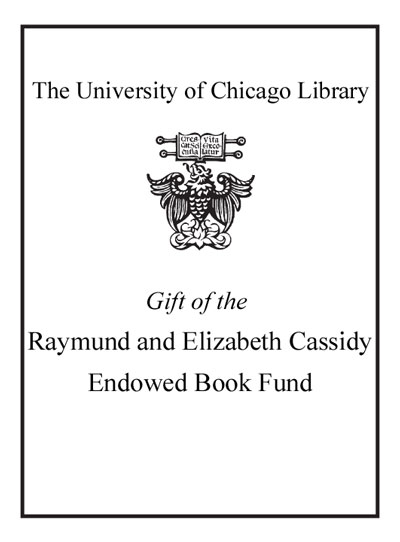Escultura amerindia : historia, mitos, semiótica, estética : Norteamérica, Mesoamérico, Centroamérica, Suramérica : catálogo antológico se han seleccinado 1365 obras /
Saved in:
| Author / Creator: | Sondereguer, César, author. |
|---|---|
| Imprint: | Bs. As. : Corregidor, [2020] ©2020 |
| Description: | 323 pages : illustrations, maps ; 28 cm. |
| Language: | Spanish |
| Series: | [Amerindia arte] Colección Amerindia arte. |
| Subject: | |
| Format: | Map Print Book |
| URL for this record: | http://pi.lib.uchicago.edu/1001/cat/bib/12697121 |
MARC
| LEADER | 00000cam a2200000Ii 4500 | ||
|---|---|---|---|
| 001 | 12697121 | ||
| 008 | 201210t20202020ag ab bc 000 0 spa d | ||
| 005 | 20220125205203.5 | ||
| 035 | |a (OCoLC)on1226413596 | ||
| 040 | |a AZU |b eng |e rda |c TEF |d OCLCO |d OCLCF |d H7K |d BP1 |d JPG | ||
| 020 | |a 9789500532792 | ||
| 020 | |a 9500532794 | ||
| 020 | |a 9789500537919 | ||
| 020 | |a 9500537915 | ||
| 035 | |a (OCoLC)1226413596 | ||
| 043 | |a n------ |a s------ | ||
| 050 | 4 | |a E59.S37 |b S66 2020 | |
| 100 | 1 | |a Sondereguer, César, |e author. | |
| 245 | 1 | 0 | |a Escultura amerindia : |b historia, mitos, semiótica, estética : Norteamérica, Mesoamérico, Centroamérica, Suramérica : catálogo antológico se han seleccinado 1365 obras / |c César Sondereguer. |
| 246 | 3 | 0 | |a Historia, mitos, semiótica, estética : |b Norteamérica, Mesoamérico, Centroamérica, Suramérica : catálogo antológico se han seleccinado 1365 obras |
| 264 | 1 | |a Bs. As. : |b Corregidor, |c [2020] | |
| 264 | 4 | |c ©2020 | |
| 300 | |a 323 pages : |b illustrations, maps ; |c 28 cm. | ||
| 336 | |a text |b txt |2 rdacontent | ||
| 336 | |a still image |b sti |2 rdacontent | ||
| 336 | |a cartographic image |b cri |2 rdacontent | ||
| 337 | |a unmediated |b n |2 rdamedia | ||
| 338 | |a volume |b nc |2 rdacarrier | ||
| 490 | 1 | |a [Amerindia arte] | |
| 500 | |a Chiefly illustrated. | ||
| 504 | |a Includes bibliographical references (page 323). | ||
| 520 | |a Having analyzed, on several occasions, the thoughts of Ancient America, I dare to formulate these opinions regarding what was thought in the Argentine Northwest. Here two parallel and simultaneous languages coexisted in the plastic work: the signal and / or ideographic and the aesthetic-plastic. Both unhinge the ideological-mythical and express the religious-poetic. The signal and ideographic was configured with formal designs of figurations or symbolic abstractions and presents the mythical-religious, cosmic and cosmovisive. The design established the aesthetic and the facticity the artisanal or artistic. The plastic fact that has been determined today by the theory. The design named the mythical entity. Thinking was magical and established the causality and content of the entity: that was the foundation of iconography. Several types of vessels were made in series and supported mythical-religious images. Such images are unique and feature gods; therefore they are transcendent. Calling them decoration is fallacious and insulting. Creating organized forms is a function of an aesthetic. In this sense The cult work, for the most part, can be shown that its formal content has been composed harmoniously. The plastic work was volitional and necessary as a mythical-religious, signal, ideographic and aesthetic sacred work, which always configures for those peoples a new cosmic entity conjured. Thus he gave a hopeful sense to the daily reality, full of continuous terrifying incidents. | ||
| 650 | 0 | |a Indian sculpture |z America |v Catalogs. | |
| 650 | 0 | |a Indians of North America |x Antiquities |v Catalogs. | |
| 650 | 0 | |a Indians of Central America |x Antiquities |v Catalogs. | |
| 650 | 0 | |a Indians of South America |x Antiquities |v Catalogs. | |
| 650 | 7 | |a Indian sculpture. |2 fast |0 (OCoLC)fst00969206 | |
| 650 | 7 | |a Indians of Central America |x Antiquities. |2 fast |0 (OCoLC)fst00969435 | |
| 650 | 7 | |a Indians of North America |x Antiquities. |2 fast |0 (OCoLC)fst00969645 | |
| 650 | 7 | |a Indians of South America |x Antiquities. |2 fast |0 (OCoLC)fst00969969 | |
| 651 | 7 | |a America. |2 fast |0 (OCoLC)fst01239786 | |
| 655 | 7 | |a Catalogs. |2 fast |0 (OCoLC)fst01423692 | |
| 830 | 0 | |a Colección Amerindia arte. | |
| 929 | |a cat | ||
| 999 | f | f | |s 2ca7ab5a-38cd-4775-b7a8-5490c526150b |i 2ca7ab5a-38cd-4775-b7a8-5490c526150b |
| 928 | |t Library of Congress classification |a E59.S37 S66 2020 |l JRL |c JRL-Gen |i 12832914 | ||
| 927 | |t Library of Congress classification |a E59.S37 S66 2020 |l JRL |c JRL-Gen |e RECA |b 117639447 |i 10357196 | ||

